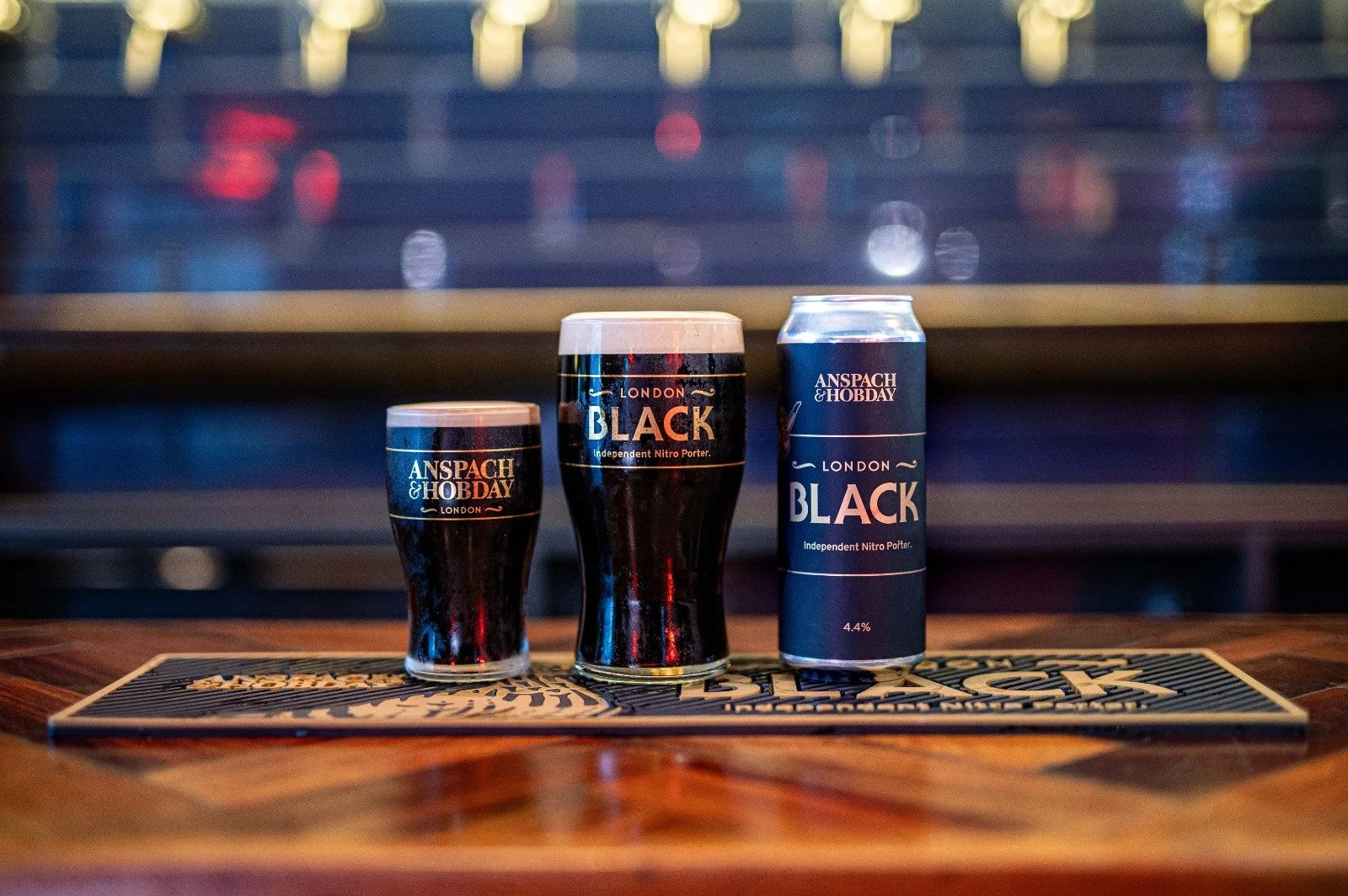Clayton’s First Day :
I just finished my first day at my new internship at the Anspach and Hobday Brewery in Croydon, and let's just say I think it's going to be a fun six weeks. My first task of the day was to figure out where I was supposed to be going. So, as I made my way up the stairs to the main office, I noticed the impressive number of beer posters I was passing. It was interesting to see as it was almost as if I was walking through a pictured history of the brews that A&H has come out with over the years. It was quite a great insight into the history and comedic culture I was walking into, and looking back, it is impressive to see the culture of A&H captured in their advertising material. As I reached the top of the stairs, I reached the main office and quickly realized that this would be a fun job. The main office of A&H is both a functional workspace and a den of creativity, with a little mix of man cave in between. It was very cool how the entire office was adorned with their product in one way or another. Whether it is a can from a discontinued line sitting on the windowsill, posters hanging on the walls, or even the coaster board that shows various beers they've made over the past years, the whole space is covered in the company's history.
After taking in the sights, I met Jack, the company's co-founder and supervisor. Jack and I first met when I was interviewing for the role at my desk in Knoxville, Tennessee, in preparation for my time in London. I am currently abroad for the semester studying international business, and this six-week internship is a critical aspect of my semester as it is a time to use the knowledge I learned in my classes in a professional environment. After getting reacquainted, Jack introduced me to everyone on the team and walked me to their secondary building to show me my office. Once I got situated, I was given my company email and credentials to log into the various aspects of the business I would be working with. After getting set up, Jack and I began discussing my role here and some of the tasks that might be of interest that I could work on in the future. A lot of them sounded really interesting. For example, I will audit A&H's online shop and see what the P&L looks like for the various products sold there. I will also be helping with the multiple operations areas A&H has, whether the warehouse, canning, or taproom, which sounded like a blast. I'll finally be able to learn the perfect pour! I might also get the chance to help with some projects on the marketing side, which would be really interesting because marketing has never been in my wheelhouse. Still, I'm excited to get out of my comfort zone and try some different areas of business!
My first assignment of the day was to make an updated spreadsheet of the total beer sold and then make a list of the beer still in stock to help plan the upcoming production schedule. I enjoyed this task because it gave me a good overview of what types of products A&H sells and their wide variety of beers. This was an excellent first task to familiarize myself with the tracking software A & H uses in a relatively simple way so that, going forward, I can be much more capable with the site. After I had completed this, I moved on to work on a marketing slogan for an upcoming Saint Patrick's Day email to be released. Working on this was fun because, as I was working with Ellie, the leading marketing person, and Jack, it turned into a comedic history lesson surrounding Saint Patrick's Day and a spitball session about how to best market A&H for the holiday. Being able to laugh and joke around while still learning a little and working towards a goal made me feel like I am a part of the A&H family and further strengthened the feeling of belonging here.
Towards the end of my first day, Jack asked me if I would like to join him at one of the monthly London Brewers Alliance, LBA, meetings. I jumped at the opportunity because it would be great to see a group of self-employed brewers all coming together and see how they all learned and grew together from each other's mistakes and successes. On the train ride to the event, however, Jack discovered we were heading to the annual general meeting of the LBA instead of a standard monthly meeting. Upon arriving, we were welcomed into a local London brewery, Saint Monday, and began an evening of conversation, drinks, and good food. It was a unique opportunity to be able to speak with people from so many different aspects of the brewery business, whether it's aggregate suppliers, equipment sellers, or brewers themselves; the whole evening was a great insight into what it takes for a beer to make it into someone's hands. Towards the end of the evening, when the alliance had to speak on the meeting topics, there were three changes to the alliance's constitution. The first two passed with flying colors, but the third caused quite a debate. The last change surrounded the idea of whether everyone thought it a good idea to add a system of accepting new members who may not brew most of their beer in London but add a "significant" impact to the London community. There were two conflicting arguments for the validity of the bill. Firstly, some people disagreed with the change because they didn't want to allow larger companies who might claim validly or not to contribute to the London Brewing scene, produce outside of London and still potentially be a member. The other thought is that this may be a good change because as breweries currently in the LBA grow and potentially move the bulk of their brewing to a cheaper location outside of London (outside of the M25 to be precise), then they could remain a part of the LBA, but if it didn't, there was a good chance they would have to leave. I won’t say which way Jack, in his capacity representing A&H, voted but the vote was so close it is now being re-run electronically. Overall, the experience gave me a lot of insight into the brewing culture in London and some of the industry's problems, which I was utterly unaware of coming into this internship. It was the best first day I could have asked for, and I cannot wait to see where this internship will take me in the future!
Clayton









